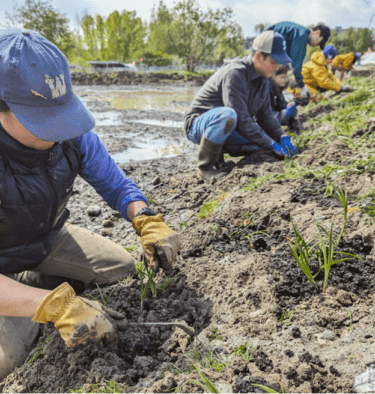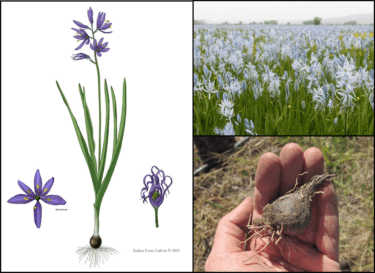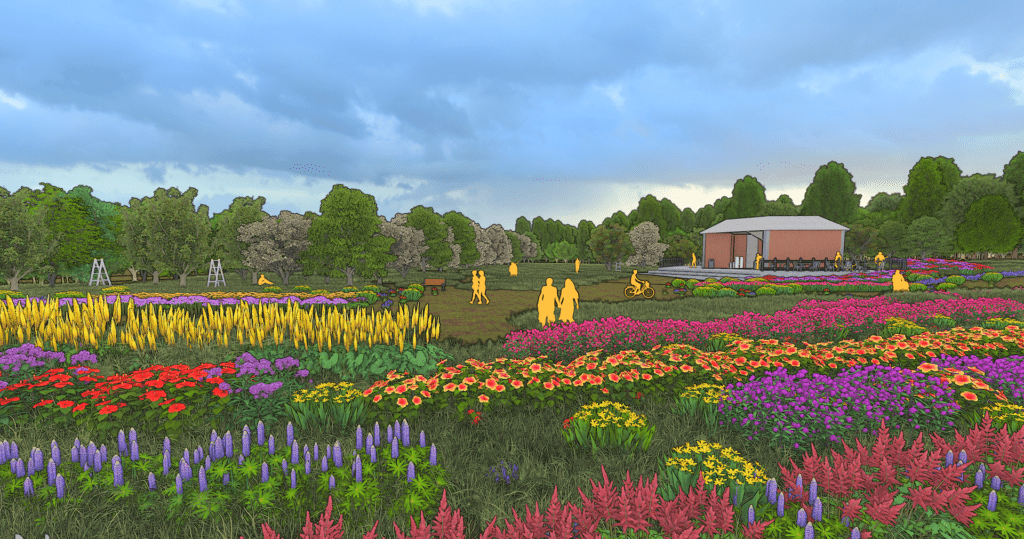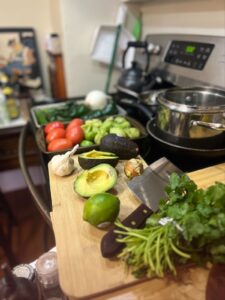Two MLA students–one current and one recent grad–were featured in the UW Farm’s Weekly Newsletter this fall!
Check out their newsletter articles below:
Around The Farm | 10.23.24
Camas Taking Root at the UW Farm
by Kove Janeski, UW Farm Seasonal Staff, UW MLA ’24
The UW Farm manages three sites across the UW Seattle campus, all of which lie on unceded and heavily altered landscapes. While the UW Farm team strives to share urban agriculture practices with the broader community through our produce and educational opportunities, we also feel that it is our responsibility and privilege to forge connections with groups that are working to empower First Nations students. This is why we are committed to the co-management of the Native Garden with wǝɫǝbʔaltxʷ – Intellectual House.
The Native Garden began in 2018 as a plot at the Farm’s CUH site to confront food insecurity facing First Nations students at UW. In 2024, thanks to support from the Campus Sustainability Fund and other donors, the UW Farm completed construction of a wapato pond. Driven by the same mission as the Native Garden, this aquatic growing space aims to cultivate culturally relevant produce for First Nations students.

During the construction of this pond in the spring of 2023, the farm was gifted dozens of locally sourced camas bulbs. Camas thrives in seasonal wetlands and temperate, moist environments – so we decided to plant these bulbs along the edges of the in-progress pond. On the pond edge, there will be high moisture throughout the rainy season and drier conditions in the summer. Camas, specifically Camassia leichtlinii, C. quamash, and C. cusickii, is a deeply significant food source for First Nations people in the Pacific Northwest.
There is evidence that camas was actively cultivated for at least 3,500 years by people in this region. An archaeological site by the Long Tom River near Veneta, OR has also uncovered camas baking ovens from 4,400 years ago. The bulb, traditionally roasted for multiple days in these ovens, is a very important food source in the Pacific Northwest. To ensure the sustainability of this food source, immature bulbs are left in the ground and camas meadows are selectively thinned through harvest. Molly Carney, an assistant professor of Anthropology at Oregon State University, describes camas as the plant equivalent of salmon – an ecological and cultural keystone.

As we look forward to camas blooms on the farm in mid spring, we hope that the cultivation of this plant in the wapato pond will lead to further collaboration with First Nations advocacy groups on campus. We are especially excited to be working with Polly Olsen, the Burke Museum of Natural History and Culture’s Tribal Liaison. Polly manages the Burke Museum’s camas meadow, which occupies about 10,000 square feet of space next to the museum. We plan to share resources to assist in the management of the camas meadow while continuing to partner with the wǝɫǝbʔaltxʷ – Intellectual House and Burke to provide an important growing and gathering space for First Nations students on campus.
Around The Farm | 10.02.24
Homemade Salsa: Connecting Mexican Heritage with the UW Farm Experience
by Sasha Crawford, UW Farm Work Study Student Staff, MLA ’26
As classes begin this fall, and my availability to work at the farm wanes, I reflect on an amazing summer of learning and growth in my first few months at the farm.
My proper introduction to the farm came during the spring quarter earlier this year, with a class field trip for the Ecological Systems Studio (LARCH403).

My group was given a design scenario which entailed doubling the acreage of the UW Farm while supporting the unhoused population. Our concept included an expanded orchard space, apiary, arable land, tool storage, community cooking spaces and so much more.
When I began working on the UW Farm, I began to realize how mighty the power of the collective is and the incredible dedication of our staff, interns, and volunteers. Building a community at the farm and sharing experiences ranging from pizza bakes, to the defense of our crops at any cost from waves of attacking deer, have cemented this summer as memorable and rewarding. Although we valiantly defended our tomato plants this year, they didn’t yield quite enough to supply one of my culinary comforts– fresh salsa.

My lifelong love for Mexican culture and cuisine most likely stems from the recent discovery that my family has roots in Mexico. Cooking is a passion of mine, and my salsa is a point of pride and I often try to find any excuse to make it. Luckily, a recent wedding meant I could share two of my favorite recipes, salsa de chipotle and salsa de aguacate. I have attached my take on these recipes below, but please note: the spirit of making a salsa is to add ingredients to your taste. ¡Provecho!
To see the full recipe, check out the full article!
And be sure to follow the UW Farm for weekly updates, recipes, and much more!